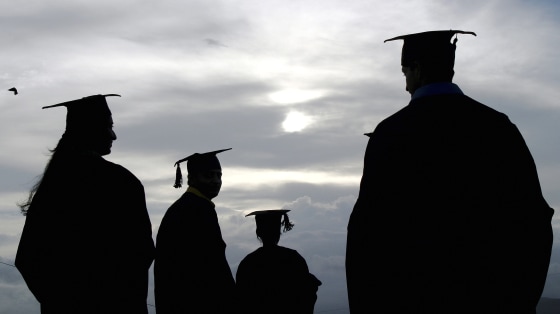What if there was one single policy initiative that could help our economy, while positively affecting the racial wealth and income inequality gaps, local businesses, and car and home ownership?
In fact, there is — and it’s possible to accomplish. In his first 100 days as president, Joe Biden should ask Congress for a bill to cancel all student debt, reform the higher education loan system and make four-year public college free to all Americans. And if Congress fails to act, which is quite likely if Republicans keep control of the Senate, Biden should try to cancel student debt with an executive order.
One criticism is the perennial “but how will we pay for it?” But this isn’t the right question.
Senate Minority Leader Chuck Schumer, D-N.Y. has already said he supports forgiving the first $50,000 in loans. A new poll from Vox and Data for Progress found that a majority of respondents support canceling some amount of debt. Biden has so far talked of a more limited debt forgiveness program for public servants, but has not committed to something broader and more sweeping.
And yet, even without that commitment, the backlash to debt relief has begun.
One criticism is the perennial “but how will we pay for it?” But this isn’t the right question. Our nation does not suffer from a lack of resources; we suffer from an excess of greed. As I tweeted in November, we “cancel” the debts of hundreds of millionaires and billionaires every year through tax breaks. We’ve bailed out billionaire corporations repeatedly without batting an eye. The theory here is that bailing out these corporations is necessary for a healthy economy and sustainable workforce. But isn’t it time the American people received that same benefit to overcome a system many feel is rigged against them?
President Donald Trump’s tax cuts failed to improve our economy, said Maya MacGuineas, president of the Committee for a Responsible Federal Budget. On the other hand, plenty of economists believe that canceling student loan debt for around 45 million Americans would most likely boost our economy.
Another criticism is that canceling student debt is unfair to those who have already managed to pay off their loans. But canceling student debt benefits everyone, not just those with debt. As the progressive nonprofit Americans for Financial Reform reported, “A study by the Levy Institute showed that student debt cancellation would boost GDP by as much as $108 billion per year, and add up to 1.5 million jobs per year.”
Just as important, surviving a past injustice does not mean we should prevent future justice. It means we should accelerate it.
Just as important, surviving a past injustice does not mean we should prevent future justice, it means we should accelerate it.
Canceling student debt would also deal a blow to the massive and increasing racial wealth gap. Studies repeatedly show that Black students are burdened with greater student debt as compared to white students because of the lasting impact of policies like redlining and Jim Crow. Compounding this injustice, the Black-white disparity in student loans increases after graduation. This growing divide is generational and further separates the haves from the have nots.
Likewise, studies and polling show that because of student debt, women are putting off having children, and young people in general are putting off buying homes and cars, or starting small businesses. National Association of Realtors chief economist Lawrence Yun told NPR in 2019 that “student debt has people delaying homeownership by five to seven years,” and estimates that broad loan forgiveness would increase home sales.
One 2019 study of 829 people by a student loan debt planning company even found that high loans can increase depression, anxiety and even suicidal thoughts. This suffering is preventable.
Finally, canceling student debt could actually help unify Americans — a core promise of the Biden administration. In November, a Hill-HarrisX poll found that the majority of Americans support Biden canceling up to $50,000 of student debt per person.
Obviously, the system needs more than a quick reset. The federal government must ensure that student loans are grounded in reality and in job opportunities after graduation. Debt reform means interest rates should also be capped. But we have to start with meaningful debt relief that will give millions of Americans room to breathe.
Young people were raised on the belief that education is the passport to the future. They pursued higher education with the understanding that economic security is the natural result of higher education. The federal government, which was elected by students and their parents, is supposed to prevent the exploitation of vulnerable young people. Instead, tuition at four-year private colleges has increased 25 percent since the 2008-09 school year and closer to 30 percent for public colleges. Meanwhile, average salaries have not increased by the same margin — not at all.
College should enable the American dream. Instead, for many, it undermines it. It shouldn’t seem radical for a young person to want the same economic access afforded to their parents and grandparents. It’s no coincidence, then, that millennials are financially worse off than their parents — a first in American history.
In 1968, the year Biden graduated from law school, the median cost of public college was $329 and the median salary was about $10,000 — a 1:30 ratio. Today, the median cost of public college is $10,230 and the median salary is about $51,000 — a 1:5 ratio. As Biden fights to reclaim the soul of our nation as president, canceling student debt is a (relatively) easy but key reform. The price tag only seems high when we don’t put it into perspective.


